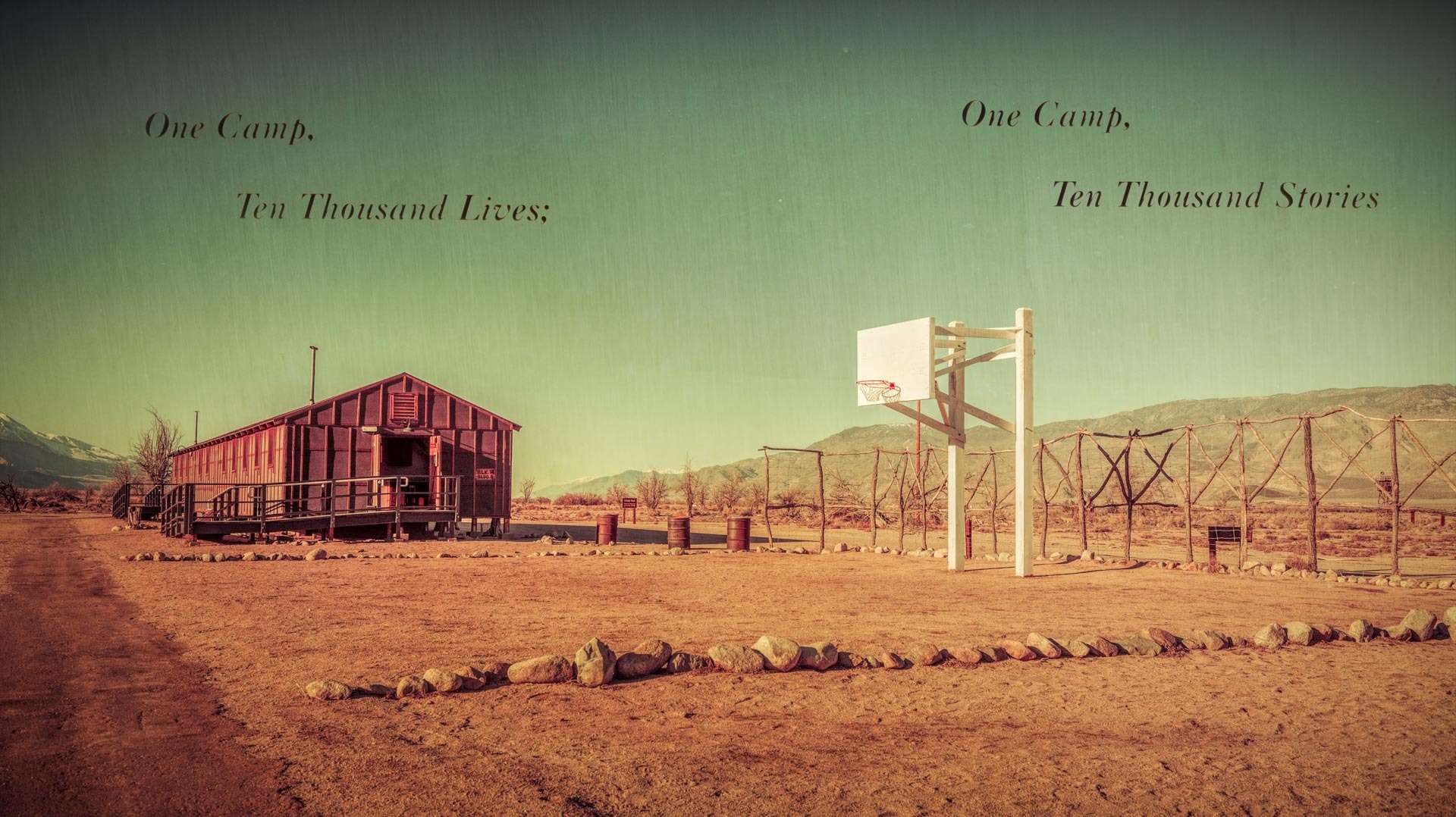If you blink while driving along US Route 395 in California’s Mohave Desert, you might miss an important historical site. After the Japanese attack on Pearl Harbor on December 7th, 1941, President Franklin D. Roosevelt signed an executive order which would solve the “Japanese Problem” on the West Coast. The order resulted in 120,000 persons of Japanese decent, many of whom were native born American citizens, to be forceably moved to military style relocation camps. Manzanar is one such internment camp.
Internees lived in quickly built barracks made of pine and tar paper. Each family lived in a 20 by 25 foot apartment within the barrack. Partitions separating apartments within the barracks did not go to the ceiling, so there was no hope for privacy in the small apartments. In the winter time, temperatures often dip into the 30s and occasionally there is snow. Rationed oil was not able to keep the barracks warm. In the summer, the barracks were brutally hot. Thanks to the desert winds, internees would often wake in the morning covered in dust that found it’s way into the poorly constructed buildings with knotholes in the floors.
Ten thousand internees lived here at Manzanar between 1942 and 1945. Most of the internees worked in the camp to keep the camp running and were paid according to their skill level. Each person also received $3.60 per month as a clothing allowance. The residents here did what they could to make their surroundings more livable by planting gardens and building recreation facilities. They participated in sports such as basketball, baseball, football and martial arts. They did what they could to make this place a community despite the fact that they were living behind barbed wire.
As a photographer, I was drawn to the story of one particular internee. Toyo Miyatake was an award winning photographer who lived in Los Angeles’ Little Tokyo district. When he was moved to Manzanar he smuggled in a camera lens and built a wooden camera for it. The camera was confiscated on several occasions, but after stealing it back several times he was eventually allowed to keep it and take photos at Manzanar. He was told, however, that he could not take pictures of the guard towers or the barbed wire. After the war, Miyatake returned to Los Angeles where he resumed his career in photography. Before his death in 1979, he collaborated with Ansel Adams to produce a book of their photographs taken during the internment: Two Views Of Manzanar. Miyatake’s children were all involved in photography as well and his grandson still runs the studio in a Los Angeles suburb.

Toyo Miyatake, Portrait by Ansel Adams, 1943
Manzanar was closed on November 21, 1945. While the internees were brought to the camp by the government, they had to leave the camp on their own. They were provided with a one-way buss or train ticket, $25 and a meal. Some internees stayed at Manzanar since they had nowhere to go when they left. They were eventually removed by force. Eventually the site was returned to it’s original state and the buildings there removed. The site is now a National Historic Site. There is a vistor’s center where you can learn the history of the people who called Manzanar home and the circumstances of their incarceration. There are two barracks buildings that have been recreated along with the mess hall. There is a driving tour where you can tour the camp, stopping at interest points along the way. There are remnants of some of the gardens, but mostly there are just sign posts and empty plots indicating what used to be here. While the barracks were interesting, they seemed too nice and clean… it was the quiet nothingness of the rest of the camp that impacted me the most.
During the years that Manzanar was open, 146 internees died in the camp. Fifteen were buried in the Manzanar Cemetery, however only 5 graves are still there. Most remains were moved to other locations by their families. The cemetery, probably my favorite spot in Manzanar, is marked by a monument built by internee Ryozo Kado in 1943. The inscription in Japanese on the front of the monument reads: Soul Consoling Tower.
If you are ever out along Highway 395, make sure to stop off at Manzanar. This place while now just a shell of what it was, is an important reminder of mistakes made in the past in hopes of never allowing them to occur again. It made me sad to be in this place and imagine what it must have been like to be forced to give up everything you had and forced to live here… your constitutional rights as citizens rescinded because of your ancestry. I pray we never see such a time again.
~L
To see more photos from Manzanar check out my Gallery.
Be sure to check out Ansel Adams’ book on Manzanar: Born Free and Equal









